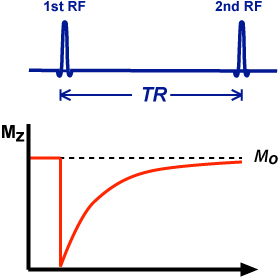Radiation

Radiation is the emission or transmission of energy in the form of waves or particles through space or through a material medium. Electromagnetic radiation Electromagnetic waves can, like all waves, be characterized by their amplitude, wavelength ( λ ), frequency ( ν ) and speed. The amplitude is the intensity of the wave. The wavelength is the distance between identical points on adjacent cycles. The frequency is the number of complete wave oscillations per unit time. The speed of the wave is equal to the product of the frequency and the wavelength, and its magnitude depends upon the nature of the material through which the wave travels and the frequency of the radiation. In a vacuum, however, the speed for all electromagnetic waves is a constant, usually denoted by c , and in which case: c = λν For X rays, wavelength is usually expressed in nanometres (nm) (1 nm = 10 -9 m) and frequency is expressed in Hertz (Hz) (1 Hz = 1 cycle/s =...





